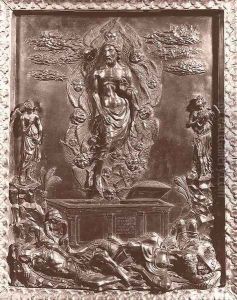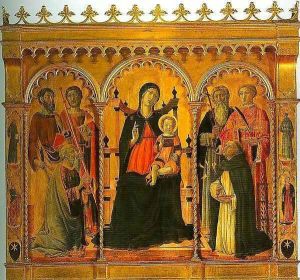Vecchietta Paintings
Lorenzo di Pietro, known as Vecchietta or Il Vecchietta, was an Italian painter, sculptor, goldsmith, and architect of the Renaissance period. Born in 1410 in Castiglione di Val d'Orcia, near Siena, Vecchietta was a prominent figure in the Sienese School of painting, which was characterized by its continuation of Gothic elements alongside the emerging Renaissance style. His work is notable for its detail, emotional depth, and the use of color, bridging the late Gothic period with the early Renaissance.
Vecchietta was apprenticed early in his life to the painter Paolo di Giovanni Fei and later influenced by the works of Sassetta, another key figure in Sienese art. Over his career, Vecchietta developed a style that incorporated the linear grace of Gothic tradition with the burgeoning interest in naturalism and humanism of the Renaissance. His contributions to art were not limited to painting; he was also an accomplished sculptor and architect, showcasing the versatile talents that were common among Renaissance artists.
Among his most significant works are the frescoes in the Hospital of Santa Maria della Scala in Siena, where he painted a series of frescoes depicting various scenes, including the life of the Virgin Mary. These works are celebrated for their narrative clarity and the emotional intensity of the figures depicted. As an architect and sculptor, Vecchietta designed and contributed to the construction of the Ospedale della Scala's fountain, a testament to his skill in both decorative and functional art forms.
Vecchietta's influence extended beyond his lifetime, with his works inspiring subsequent generations of artists in the Sienese tradition. Despite his significant contributions to the Italian Renaissance, Vecchietta is not as widely known as some of his contemporaries, such as Donatello or Mantegna. However, his work remains an important bridge between the Gothic and Renaissance styles, reflecting the transitional period in which he lived. Vecchietta died in 1480 in Siena, leaving behind a legacy of artistic achievement that continues to be studied and admired.



